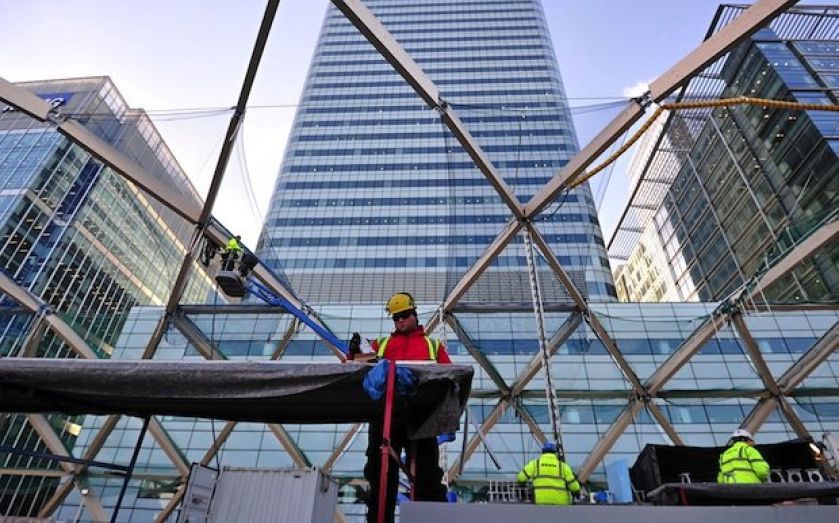London needs Crossrail Two and we must kickstart this vital project now

EACH morning, millions of Londoners cram themselves onto Tube trains in conditions that, under EU laws, would be illegal for transporting livestock. Each evening, they repeat the ordeal. But this squeeze on transport infrastructure is not simply unpleasant – it is economically damaging too.
Our city’s antiquated transport system is barely managing to meet demand, and things will only get worse. London’s population is set to hit 10m by 2030, while the forecast creation of over 600,000 new jobs means a similar number of new commuters. The city’s transport system needs further updating – and it needs it now. A London First task force recently confirmed that, in 15 years, the demands placed on our transport infrastructure will be crippling unless ambitious improvements are undertaken now. In a world city that must constantly adapt to meet changing demand, improved transport is a necessity.
Building such a system means well-placed and well-spent investment, and the first area of spending should be on the necessity that is Crossrail Two. This would take the form of a new north-west to south-west train line that would follow the opening of the initial Crossrail line in 2018. Unfortunately, the government’s new national infrastructure plan, published yesterday, made no mention of such a project.
The idea is not new. A route similar to the proposed Crossrail Two line has been safeguarded since 1991. The plans are backed by Boris Johnson and Transport for London, while George Osborne has hinted at support. Consultation results released last week revealed the project has the support of 96 per cent of the public. But progress has been slow. Now we must release the brakes on this crucial project.
The benefits of Crossrail Two are numerous. First, it would significantly increase capacity and improve the city’s sub-standard north-south transport links. This must be an urgent priority. Crossrail Two would cater for an extra 100,000 passenger journeys in rush hour. Transport experts also warn that HS2 will cause a 30 per cent increase in morning arrivals at Euston, meaning thousands more passengers arriving in London to cram onto a transport system that is already desperately struggling to cope. It makes no sense whatsoever to build HS2 without a commitment to building Crossrail Two at the same time.
As well as increasing capacity, a new line would make it easier and quicker to get into and around the city; Crossrail Two would significantly cut commuting times for millions of people living in the South East. It currently takes as long to get from Enfield in the north-east of London to Kingston in the south-west as it does to travel the 120 miles from London to Birmingham. London’s creaking north-south transport links need transforming if the city is going to have the modern, efficient and co-ordinated transport system that its economy – and its population – demands.
Crossrail Two would bring significant economic benefits not just to London and the South East but to the British economy as a whole. The original Crossrail project is estimated to be worth £42bn in economic benefits to London and the wider UK. There is no reason not to believe that investment in Crossrail Two would reap similar rewards, improving transport links to poorly-connected parts of the South East and driving crucial regeneration in areas such as the Lea Valley, Tottenham and Hackney. South West London would also benefit greatly from improved connectivity with the rest of the city.
Lastly, Crossrail Two would help alleviate the pressure on London’s airports. While capacity problems at Heathrow are well-known, Stansted continues to operate at just 50 per cent of its capacity. The main barrier to its growth is the dire state of surface transport links to the airport: even the express service currently takes nearly an hour to get there from Central London. The best proposed route for Crossrail Two sees the line extended to reach Stansted – opening up one of London’s main airports to a significant capacity increase.
It may seem odd to discuss a second Crossrail line before the first has even opened. But we need to plan well in advance. In fact, the work needs to start now. Crossrail took decades of debate, delays and wrangling before the first drills started digging. London cannot afford a repeat of this. Our population is growing, the demands placed on London and Londoners constantly changing. It is crucial that London’s leaders keep pace, think ahead and plan strategically for the city that London will be in 2020 and beyond. Piecemeal changes and crack-covering improvements cannot be sustained. London needs a clear, long-term transport plan to increase capacity, and Crossrail Two must be an integral part of it.
David Lammy is Labour MP for Tottenham, and chair of the All-Party Parliamentary Group on Crossrail Two.